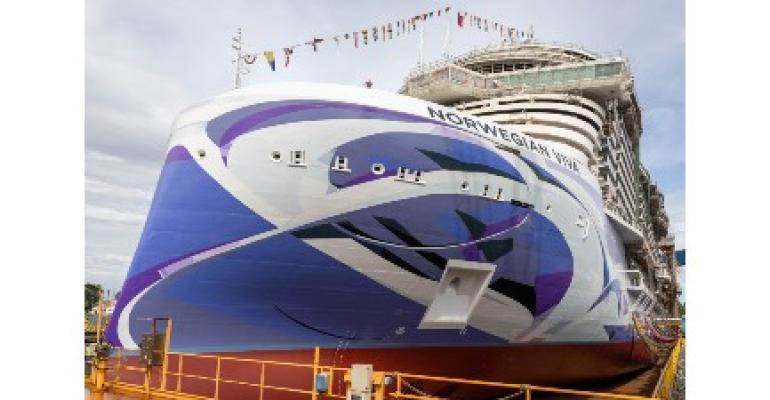NCLH has been working to rein in expenses.
Adjusted net cruise cost per capacity day excluding fuel is expected to average approximately $165 in Q1 and $160 for full year 2023, a nearly 15% decrease compared to the average $187 in the second half of 2022.
Scaling back marketing, among other initiatives
The second half included hefty marketing expenses as the fleet resumed service. CFO Mark Kempa said the 2023 decrease will come from scaling back and normalizing marketing investments, which were elevated to reset expectations and raise the bar in pricing during relaunch; moderation of hyperinflation in certain areas including food and logistics; and operating efficiency and cost minimization, among other factors.
Costs per capacity day are expected to trend lower during the year as occupancy increases and efficiencies improve and lead to a normalized run rate exiting the year that should be somewhere in the low teens versus 2019, Kempa said.
Need to do a better job of leveraging scale
'We are committed to right-sizing our cost base and are taking deliberate actions across our business to best position us in the future as a stronger and leaner organization,' he told analysts.
Kempa added that NCLH has to do a 'better job of leveraging our scale.'
The company will grow capacity by almost 50% between now and 2028. It is in line for a 19% capacity hike this year with three ships adding 5,000 lower berths.
$1.2b for expanded Prima-class newbuilds
In reporting earnings, NCLH disclosed that modifying certain existing newbuild contracts resulted in an increase of approximately €1.2b. These changes include the previously communicated modification and enlargement of the last four Prima-class vessels as well as additional modifications to the final two ships to accommodate the use of green methanol as an alternative future fuel.
Compared to the first-generation 140,000gt Prima-class vessels, these changes will result in an approximately 10% increase in gross tonnage for the third and fourth ships and an approximately 20% increase in gross tonnage for the fifth and sixth ships. NCLH previously had confirmed only that lower-berth capacity would go from 3,125 for this year's Norwegian Viva to 3,550 for the Prima Plus ships. And it had previously specified what was reiterated today: one next generation Prima-class ship delivery each year from 2025 through 2028. (No 2024 delivery.)
NCLH said the majority of the increase in ship construction costs is not effective unless financing is secured and added it is currently in the process of securing additional export credit agency-backed financing to cover the costs.
Other contributors to higher capex?
UBS analyst Robin Farley asked if other things are contributing the capex increase beyond just those changes?
Kempa cautioned against viewing the higher cost against just the additional berths because further technical aspects are involved.
'It's not just adding cabins. It's lengthening the vessels, widening the vessels but also more importantly, on 5 and 6, we are getting those vessels to be methanol-ready,' Kempa said. 'Going green is not free; there is a cost to it. We think this is a good cost.'
Norwegian Cruise Line President Harry Sommer said that enlarging Prima 3 and 4, coming in 2025 and 2026, will give better economies of scale. Adding methanol tanks to 5 and 6 allows further scale and higher passenger count.
Entertainment and turndown service cuts
Analyst Steven Wieczynski of Stifel Nicolaus Capital Markets asked about balancing cost-cutting with the passenger experience and long-term perception of the product.
NCL recently removed one of its production shows and discontinued cabin turndown service for some categories.
'It is a balance,' NCLH President/CEO Frank Del Rio said. 'We're trying to balance what customers pay for and what they actually receive. So, for example, we do not cut the turndown service across all brands nor all cabin categories. It's only the lower cabin categories that equate to a lower per diem.'
'Aligning with the new normal' in hospitality
Kempa added: 'We're simply aligning ourselves to what others in the hospitality sector have done as well. This is nothing new. Customers in today's society are used to getting a different level of service. We're not degrading the product ... But we're going to align ourselves with what is the new normal in the hospitality sector.'
Increased gratuities
With gratuities going up by a 'pretty decent amount,' Wieczynski asked what's the impact on yields and costs from an accounting perspective?
Higher service fees get rolled up as part of gross revenue but there's also a cost to that. The 'vast majority' of service fees go to crew, 'but there is a revenue component and a cost component to it,' Kempa said, adding there's been no change in the accounting or the comparability.
Copyright © 2024. All rights reserved. Seatrade, a trading name of Informa Markets (UK) Limited.
Add Seatrade Cruise News to your Google News feed.  |

